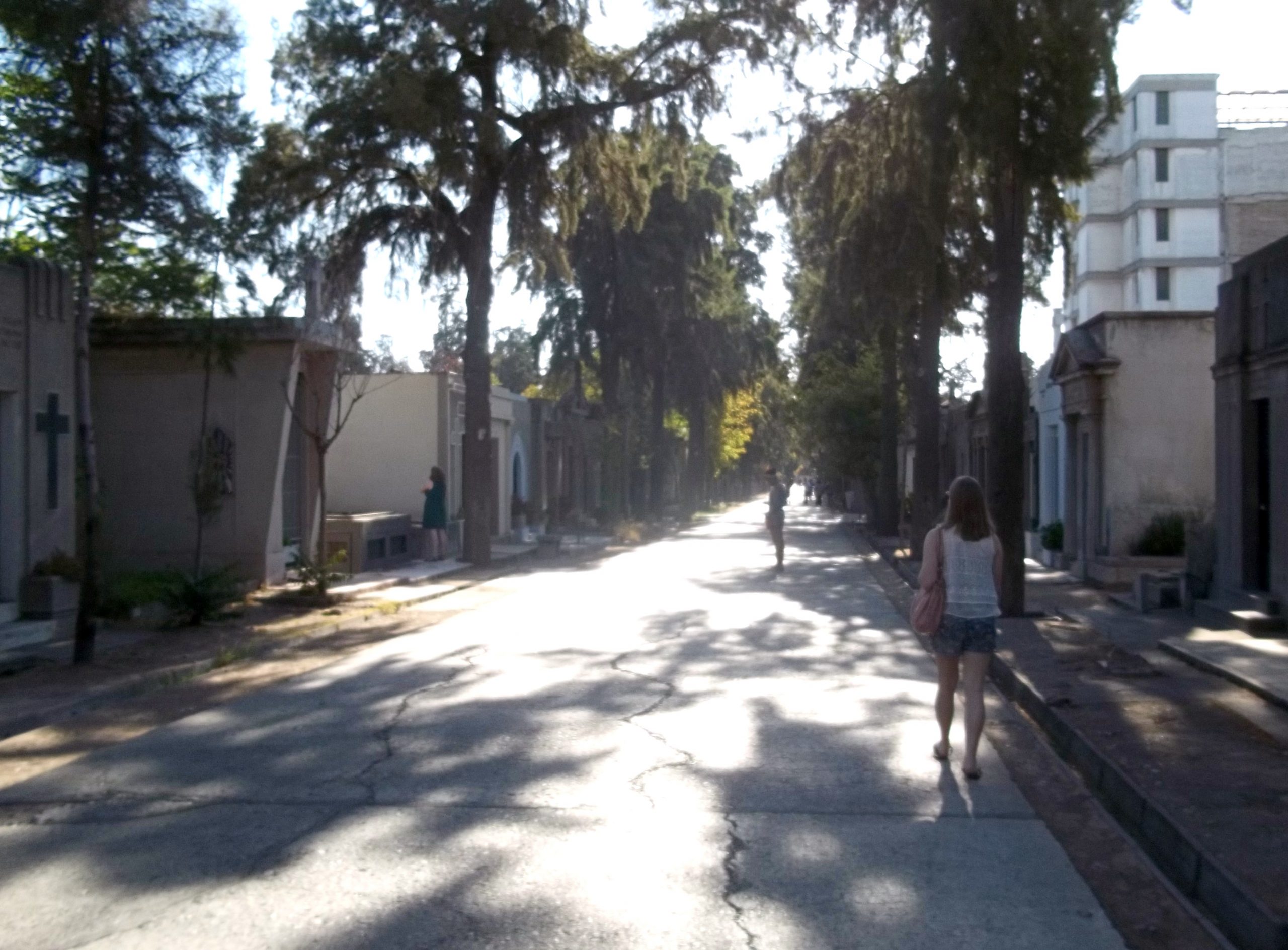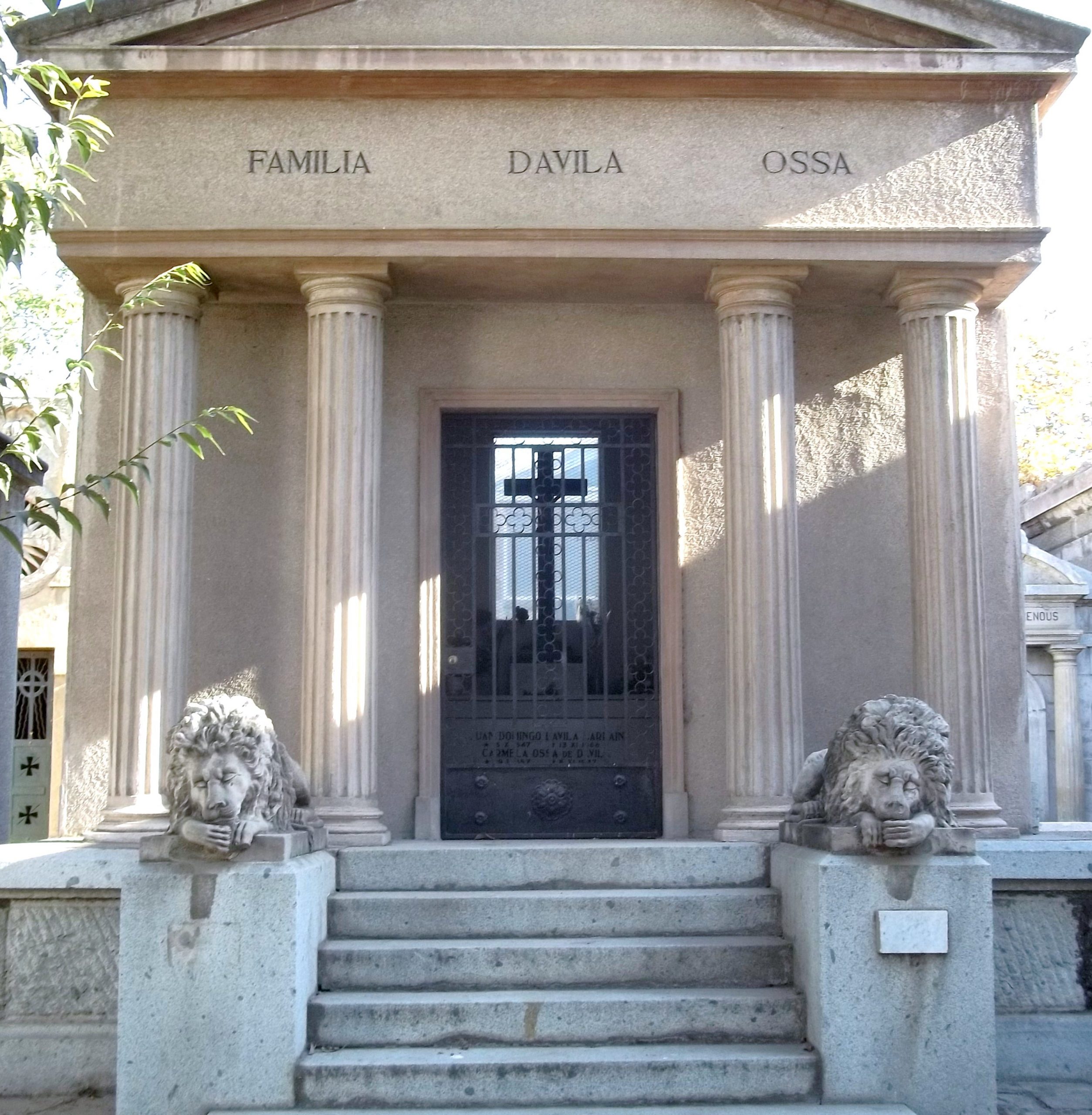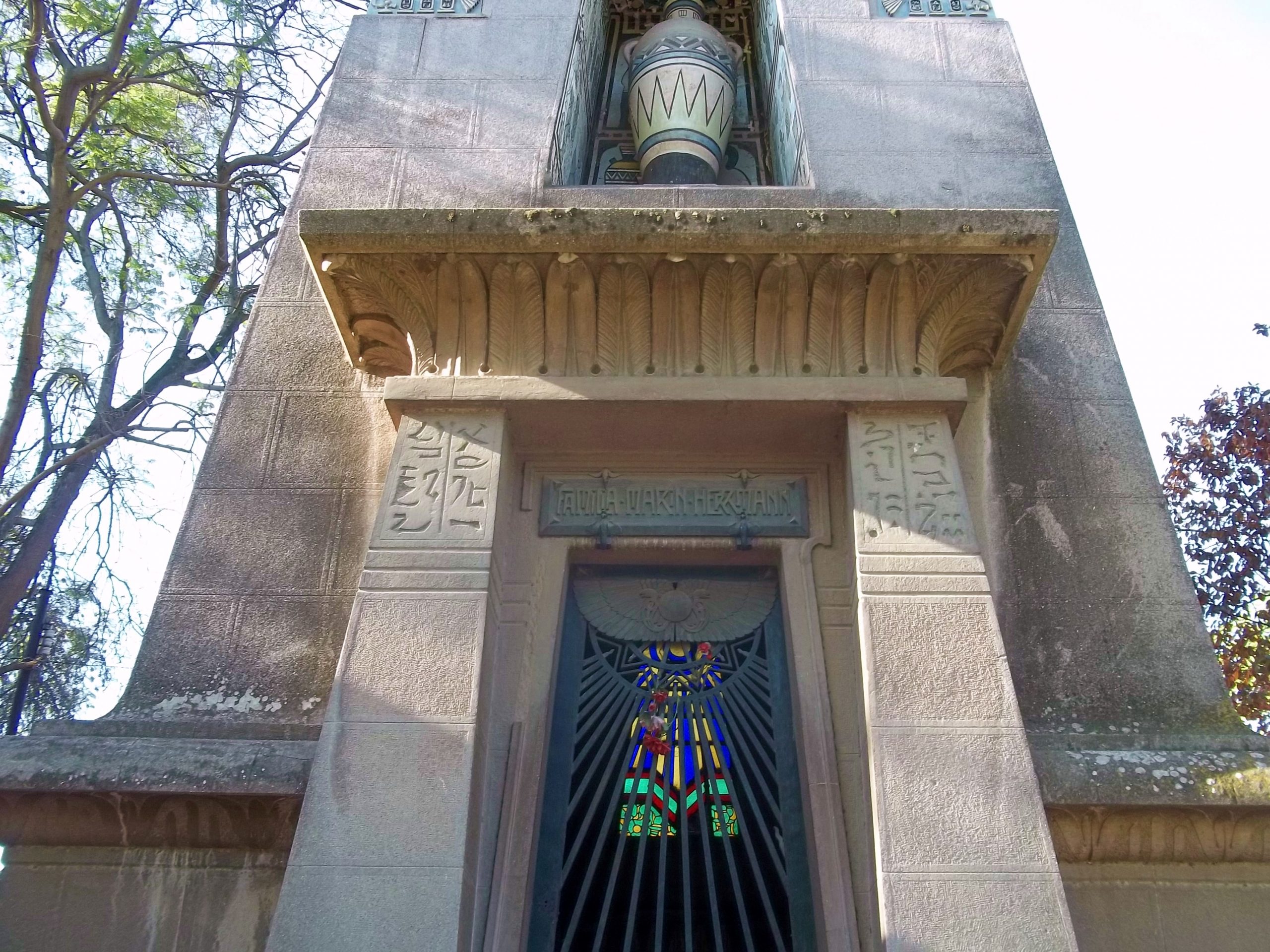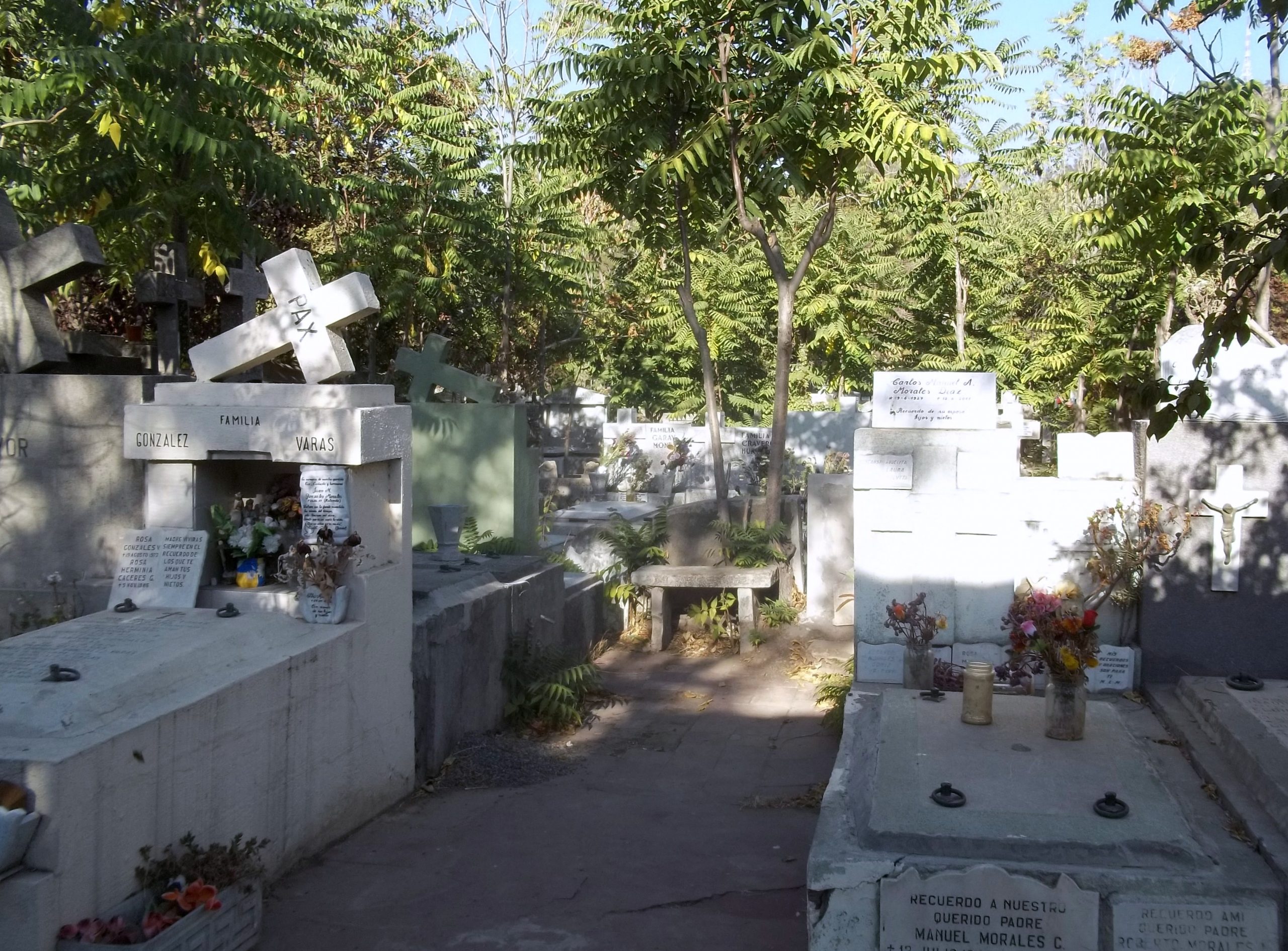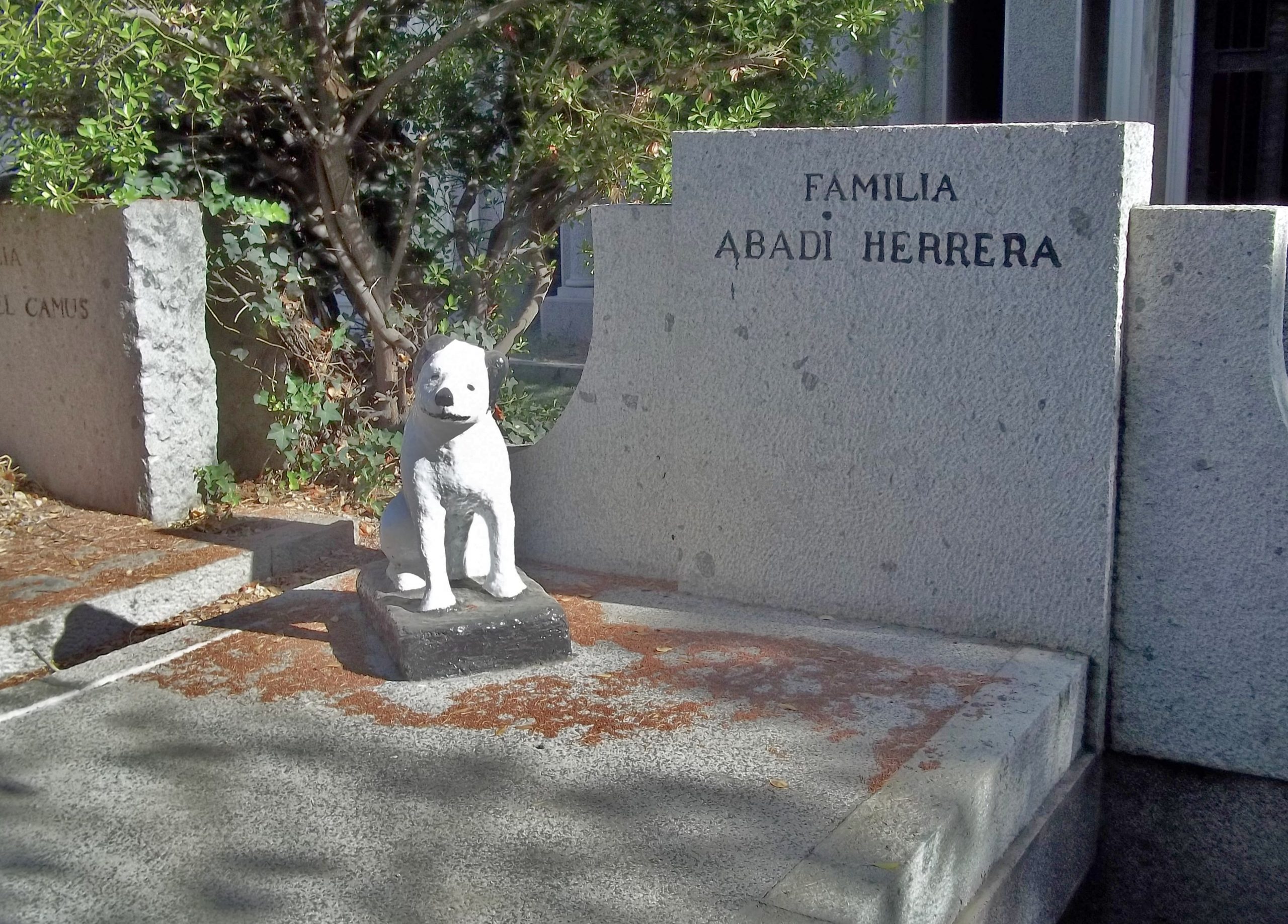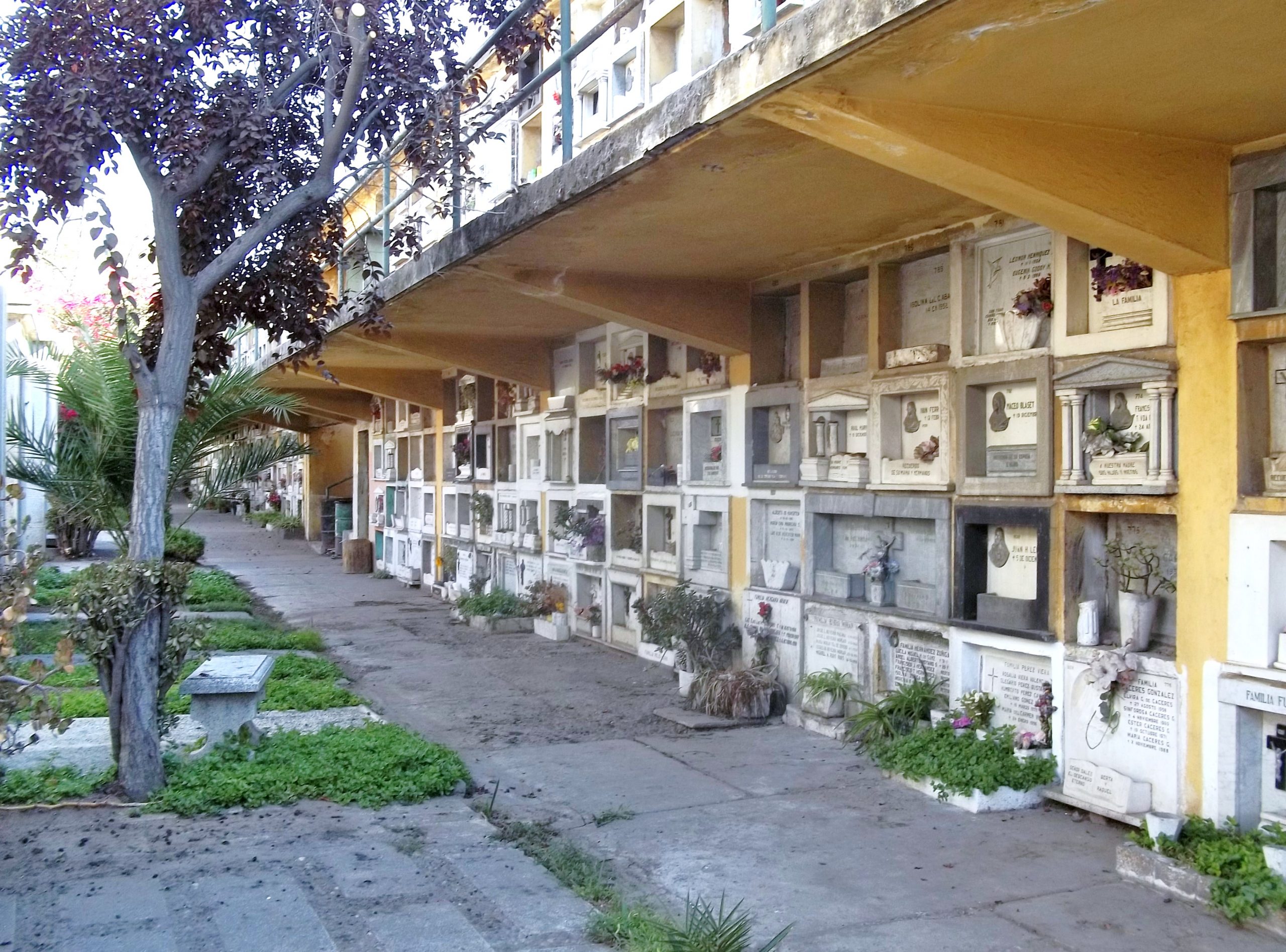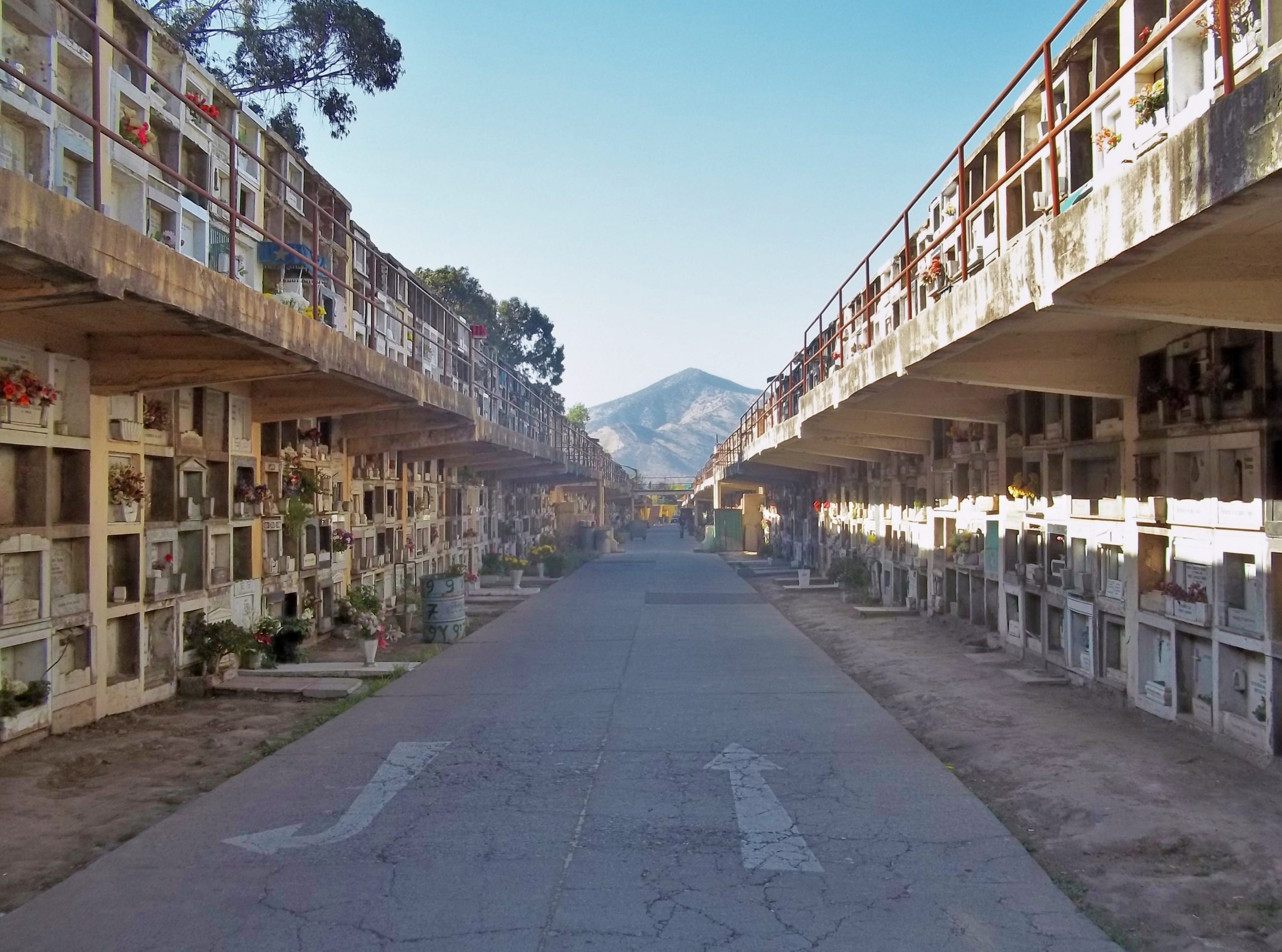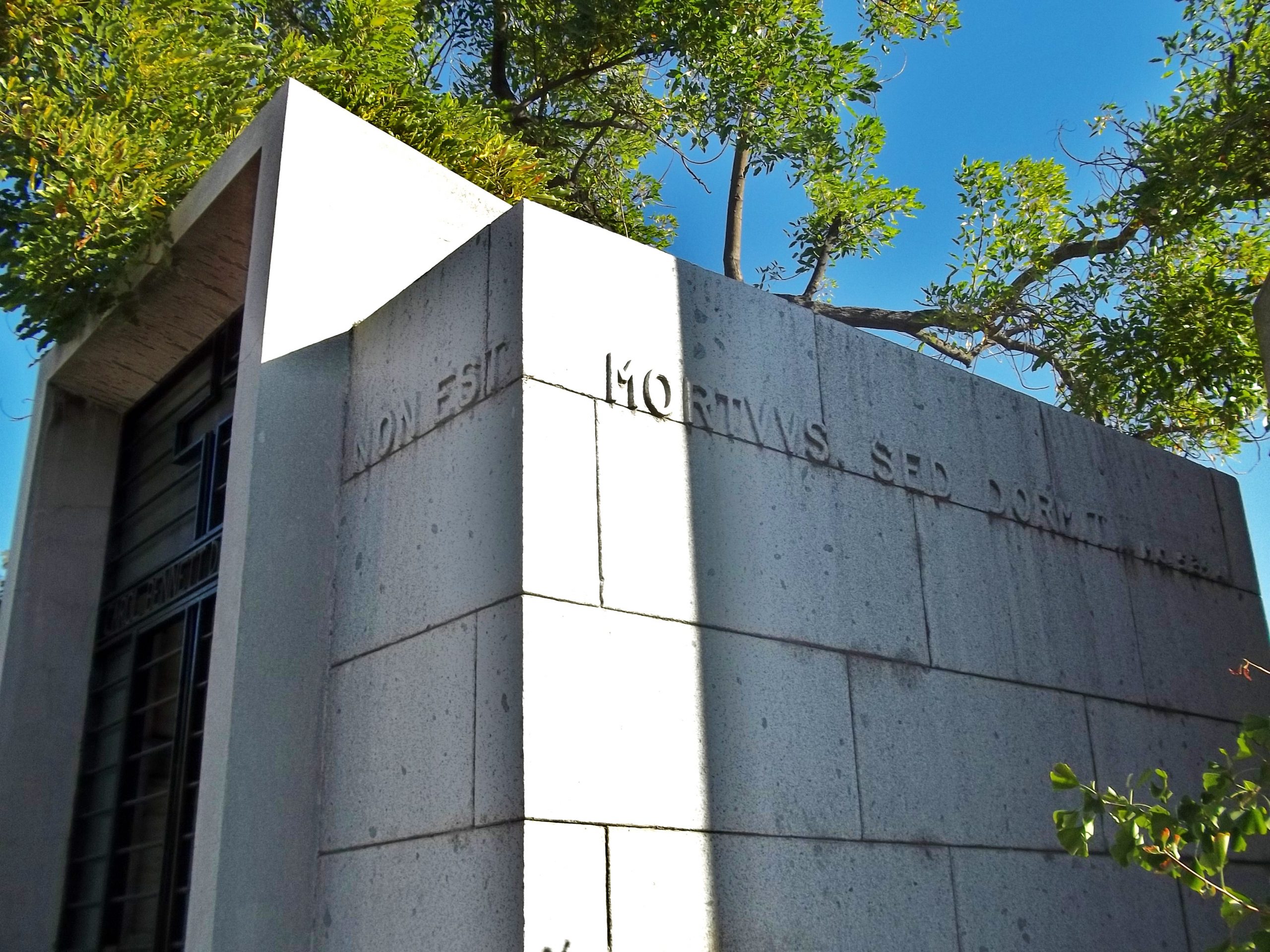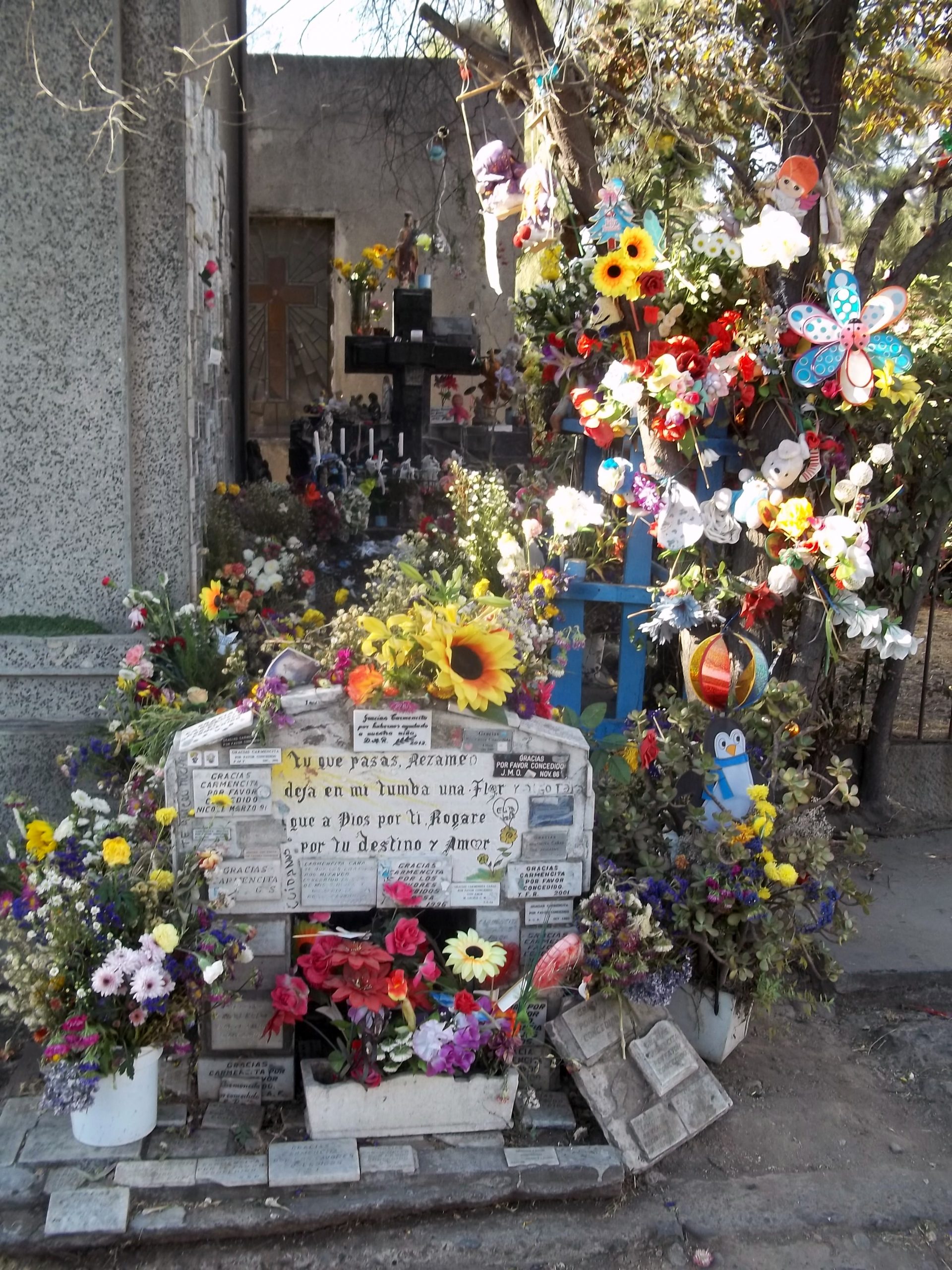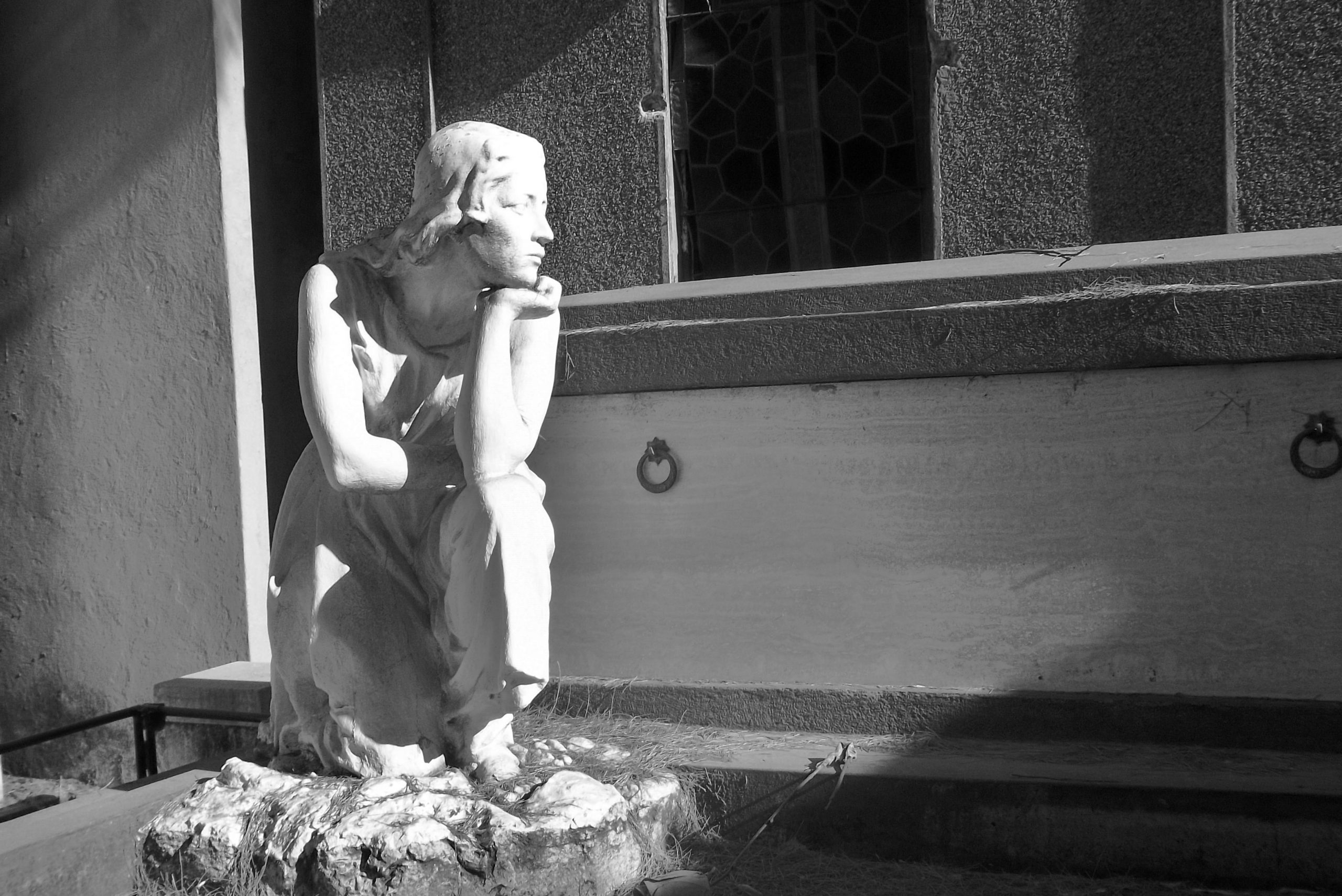This Chilean Deathstination comes from Abigail Carney, a student at Roger Williams University who’s currently studying abroad in Santiago.
*~*~*~*~*~*~*~*~*~*~*~*~*~*~*~*~*~*~*~*~*~*~*~*
Today, I would like to invite you to join me in a cadaverous cruise through South America’s second largest cemetery, Cementerio General de Santiago in Santiago, Chile. This hallowed ground, first consecrated in 1820, is the final resting place for more than two million sets of human remains, including all but two of Chile’s presidents. The cemetery is massive, sprawling over 210 acres of land like a small city of the dead with streets and avenues and lots of trees.
Cemeteries are fascinating not only because they are full of dead people but also because of their role in society as an archive. In cemeteries we don’t just store dead people, we catalog them. We carve their names and dates in stone to preserve them for generations to come, and in doing so, we showcase our culture in the ways in which we memorialize our dead. There are three burial options at the Cementerio General, all of which can be adapted for cremated remains as well. Chile was rated eighth in the world for inequitably distributed wealth and poor economic mobility, and the level at which you entered the world has everything to do with where you will end up after you exit.
Now, if you’re really someone in Santiago your family will have an above-ground mausoleum. These are small, freestanding buildings of stone ranging from the size of a modest garden shed to a medium-size cottage. Mausoleums in the Cementerio General come in all sorts of styles and flavors, from minimalistic white marble to elaborate Egyptian-themed tombs. Universally, they all tend to have doors of wrought metal with a stained glass piece on the back wall that shines through when the sun falls behind it. The effect is really gorgeous and an excellent example of how families show off their wealth while providing a secure resting place for their dead.
If you are a family of more modest means but still comfortably within the middle- to upper middle-class you most likely will choose to put your dearly departed to rest in a crypt. Above ground is a large tombstone with the family name. Stairs lead below ground to bookshelf-like niches for caskets. These are sealed with a cement slab after an interment, and typically there is a metal gate blocking access from the stairs to the niches for security. This private spot also allows the family to be physically close to their loved ones, separated in some cases by only by cement and casket.
Back above ground are the wall niches. This is a more affordable permanent option for both the working class and the lower class; they can be rented for a period of 5 or 10 years. There are literally levels upon levels of these niches, into which a casketed corpse is slid, feet first, and then sealed and capped with a plaque bearing the deceased’s name and date of death. The date of birth isn’t always included.
Whether abuelita is laid to rest in an elaborate mausoleum, a modest family crypt, or a humble wall niche, one universal element throughout the cemetery is the obvious care and love expressed through the upkeep of the tombs as well as the offerings left behind. I saw pinwheels, flowers, toys, sweets, candles, figurines, letters, photographs, poems etched in stone, wreaths, personal effects, and bottles of wine, just to name a few. The diversity of items reflects the diversity of the dead and the families who remember them. One might draw the conclusion that death is something that is denied in Latin American culture; the configuration of the interment options both protects the dead and facilitates frequent visits by families, and gifts are often left for the dead. Actually, this is only one side of the paradox of death in Latin American culture.
On the one hand, death is readily accepted as inevitable and there is no attempt to disguise death from children. On the other hand, the dead are thought of as still present in the world of the living, hence the presents and offerings.
A very interesting product of this dual mentality is the animita, which is a shrine built to placate the soul of someone who died an unnatural death, such as from an accident or act of violence. The animita is usually located at the site of the death, and people who never knew the person in life will leave offerings, pray, and ask favors of the dead person.
There are many animitas in the Cementerio, but one of the most interesting is the story behind that of “La Novia.” Legend says she was playing with her friends in the cemetery when she tripped on some stairs and died. Another version of her story says she was left at the altar on her wedding day and died of heartbreak. The reality is that Orlita “La Novia” Romero Gómez died of a heart attack on her 17th birthday. Her mother was so distraught that she had her embalmed and placed in a glass casket. Legend has it that every Sunday she would visit the family mausoleum to brush her deceased daughter’s hair, but this is not true. The mother has since died and time has not been kind to La Novia, so her casket is now hidden behind a velvet curtain. The front glass of the door has cracked, and now teenagers in love will write the names of their crushes on slips of paper and slip them through so that La Novia might bless them with romance. When La Novia grants their wishes the students will often tie their school uniform tie to the door and write a message on the wall of the mausoleum.
In the places where we lay our dead to rest our culture lives on stronger than ever. Even the dearly departed cannot escape the socioeconomic stratification that they experienced in life. The Cementerio General represents a synthesis of two seemingly opposing Latin American attitudes about death: death as an inevitable end to the human cycle and death as a means to an omnipresent, saint-like state of being. If you should find yourself in Santiago, Chile I highly recommend paying the Cementerio General a visit.

